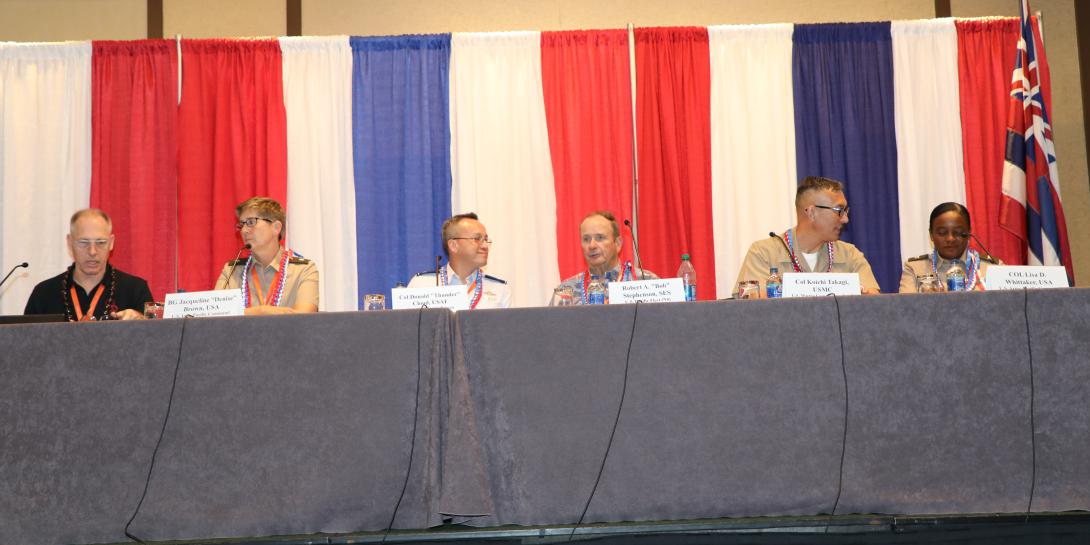Technology Drives J-6 Objectives
New information technologies that are heading toward the military also promise to change the way the force operates at all levels, say experts in charge of those systems. With these new technologies come new demands that must be met to guarantee effectiveness, the experts note.
These changes were discussed in a J-6 panel on the second day of TechNet Indo-Pacific, being held in Honolulu April 11-13. Its theme of “From Data to Dominance” went to the heart of what the communicators are tasked with achieving in their missions.
Robert A. Stephenson, director for Communications and Information Systems and chief information officer, commander, U.S. Pacific Fleet, said his primary focus is to be able to use the revolution in transport. He cited an example of connectivity aboard the USS Abraham Lincoln that relied on a new commercial satellite constellation. One result was increased communications between the crew and their families resulting from the elimination of latency issues, he related.
“The key lies in the proliferated number of satellites,” he stated, adding it will change the entire force.
The second transport revolution is the advent of 5G, Stephenson maintained. It will enable edge computing, which will open up a host of new capabilities.
The second transport revolution is 5G. We’re doing edge computing enabled by 5G.—Robert A. Stephenson, director for CIS & CIO commander, @USPacificFleet #AFCEATechNet
— Bob Ackerman (@rkackerman) April 12, 2022
Col. Donald “Thunder” Cloud, USAF, deputy director, Air and Cyberspace Operations, U.S. Pacific Air Forces, cited the need for data-centric command and control. Given the threat of adversarial interference in the Indo-Pacific region, he noted that the Pacific Air Forces are testing out new concepts to be able to operate in a more complex manner. The Air Force also is looking to bring big data analytics to defend data sets as well as network capabilities, he added.
The Air Force is looking to bring big data analytics to defend data sets as well as network capabilities.—Col. Donald “Thunder” Cloud, USAF, deputy director, Air & Cyberspace Operations, U.S. Pacific Air Forces @ForcesPacific #AFCEATechNet
— Bob Ackerman (@rkackerman) April 12, 2022
The advent of new information technologies is changing the way battles are assessed, offered Col. Koichi Takagi, USMC, director of operations in the information environment, U.S. Marine Forces Pacific. “We cannot calculate space cyber cognitive effects in the absence of, or separately from, kinetic effects,” he charged. All affect each other in terms of operations and results.
We cannot calculate space cyber cognitive effects in the absence of, or separately from, kinetic effects.—Col. Koichi Takagi, USMC, director of operations in the information environment, U.S. Marine Forces Pacific #AFCEATechNet
— Bob Ackerman (@rkackerman) April 12, 2022
The elephant in the room for incorporating these innovative technologies is acquisition and its regulations. “Policy, technology and procedure are standing in the way of naval integration.” Col. Takagi stated. Stephenson concurred, citing rules that provide unnecessary roadblocks to efficiency.
“The process is slow,” Stephenson charged. “It takes us on average 18 months to get something through cybersecurity, even if it’s developed by the NSA.” He noted that the Air Force has an app he would like to adopt, but it would have to go through a tedious screening process. “If its accreditation is good enough for them, it is good enough for me,” he warranted.





Comments